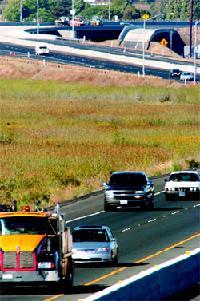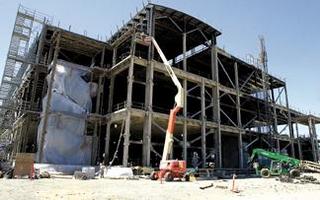ContraCostaTimes.com | 12/29/2005 | Bay Area paychecks highest, study says
Bay Area paychecks highest, study says
By George Avalos
CONTRA COSTA TIMES
From management to the rank-and-file, for white-collar and blue-collar jobs, Bay Area workers are the best-paid in the country, according to a study released Wednesday.
Employees in the Bay Area enjoy average paychecks that are 17 percent higher than the national average, the U.S. Bureau of Labor Statistics survey found. And no other region is as far ahead of the nation as the Bay Area when it comes to wages. The closest competitor to the Bay Area is Hartford, Conn., where wages are 13 percent higher than the country's average.
"All things being equal, the Bay Area pays significantly more," said Charlotte Yee, regional economist with the San Francisco office of the Bureau of Labor Statistics. The agency adjusted the wage data to reflect the mix of jobs in metropolitan regions across the country to make it easier to compare regions with above-average wages to those with below-average wages. Yet, even accounting for the high-pay and high-skill jobs that dominate this region, the Bay Area came out on top.
There are tradeoffs. The region's sky-high cost of living has eroded the wage advantages wielded by Bay Area workers. Data compiled by ACCRA, a Virginia-based group that studies regional economic trends, found the San Francisco area had the second-highest cost of living in the nation, and the East Bay had the fifth-highest. South Bay data was not available.
"There is a wage premium in the Bay Area," said Jean Ross, executive director of the California Budget Project. "The critical question, however, is whether that premium is sufficient to offset the higher cost of living here."
That wage premium is spread throughout every major occupation. The Bay Area is well above the national average in each of nine major job categories. The bureau's study is based on 2004 data, the most current available.
One indicator could bode especially well for the East Bay, where homes have sprouted at a fevered pace in the past couple of decades. Construction and extraction jobs commanded average wages that were 27 percent higher than the national average.
"The high pay for construction reflects the hot housing market," Yee said.
The study also suggests that rank-and-file workers are keeping up with their bosses. The average pay for managers and executives in the Bay Area, the bureau found, was 17 percent higher than the national average -- exactly matching the pay premium for all Bay Area occupations.
Yet even when recruiters dangle high wages in front of candidates, the high cost of living makes it tough for recruiters to coax people to relocate to the Bay Area.
"California has one of the highest income tax rates of any state, and home prices are much higher in the Bay Area," said Ralph Henderson, senior vice president with the San Ramon office of staffing services firm Spherion. "Recruiting has definitely become tougher. Taxes are a real burden for employers and employees in California."
Companies also find it difficult to attract top-level managers, said Laura Raynak, president and founder of Palo Alto-based Raynak Search, an executive search firm.
"If they are from New York City, Boston or New Jersey, it's not as tough to recruit an executive," she said. "If they're from anywhere else, it's a shock."
Sometimes the shock factor simply boils down to the per-square-foot cost of a home. People can simply buy much larger homes for the same price elsewhere in the country.
"The sizes of the homes just don't compare," Raynak said. "In other parts of California or the country, people can pay a few hundred thousand dollars and have a pretty big home on an acre lot. In the Bay Area, that's well over a million dollars."
Still, the wage premium in the Bay Area does more than merely reflect the need to offset the higher cost of living. It also suggests that employers have begun to battle each other to hire people as the economy rebounds.
"There is greater competition to hire people, so pay is higher," Yee said.
REGIONAL COMPARISONS
Here are the 10 regions with the highest wages in the country, ranked by how much higher the region's wages are compared to the national average.
Region Percent above national average
Bay Area 17
Hartford, Conn. 13
Boston area 12
Anchorage, Alaska 11
New York City area 10
Salinas 10
Minneapolis 9
San Diego 9
Providence, R.I. 8
Sacramento 8
Source: Bureau of Labor Statistics
--------------------------------------------------------------------------------
George Avalos covers the economy, financial markets, insurance and banks. Reach him at 925-977-8477 or gavalos@cctimes.com.
--------------------------------------------------------------------------------
© 2005 ContraCostaTimes.com and wire service sources. All Rights Reserved.
http://www.contracostatimes.com
Name



